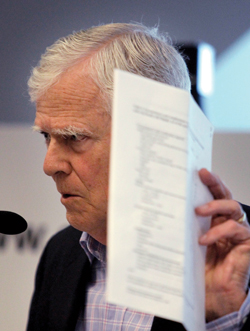Changing health care from the ground up
Health care reform will play out in doctors' offices, not in Washington, D.C. Patients and physicians will determine how costs change in the upcoming years.
The political debate about health care reform, for the most part, continues to be directed at Washington. Many Republican candidates for Congress vow to “repeal and replace” the Preserving Patient Access to Affordable Care Act (PPACA) if the GOP wins control of Congress in the mid-term elections (although it is hard to imagine how repeal could happen as long as President Obama is in the White House).
Democrats, for the most part, tout the “immediate benefits” of provisions that take effect this year and dare the GOP to run on repealing them. For instance, PPACA prohibits insurance companies from denying or charging excessive rates for coverage of children with pre-existing conditions or from rescinding health insurance coverage. It also requires them to provide dependent coverage for young adults up to age 26 on their parents' plans.
Beyond the specifics of the legislation, though, there is a long-running debate over the impact of the legislation on the federal budget deficit and national debt. Republicans argue that the legislation doesn't control costs and will bankrupt the country. Democrats retort that the Congressional Budget Office (CBO) estimates that the legislation more than pays for itself and actually lowers the deficit. The CBO actually said that the revenue/tax increases in the legislation, combined with Medicare savings, will exceed the increased spending that would result from it.
The PPACA may spawn some new practice models that will begin to reduce increases in health care spending, such as accountable care organizations and patient-centered medical homes, and could also spur research on comparative effectiveness of different treatments. But even with such reforms, the trajectory of health care spending will continue to grow faster than the overall economy, according to the CBO.
Changing medical culture
Perhaps the answer to bending the cost curve can't be found in Washington but in changing the culture of medicine in communities throughout the country.
Think of it this way. National health care spending is the result of decisions made each and every day by physicians, hospitals and patients in every clinic and hospital in the United States. Every test that is ordered, every medication prescribed, and every patient admitted to a hospital adds to the total national expenditures on health care. Yet we know from decades of research that some communities deliver care more efficiently and effectively than others, even after adjustment for differences in the characteristics of the patient population being treated.
We also know that certain behaviors tend to be associated with higher spending. The Washington Post reported on May 18 that Provo, Utah, a community that “until recently, seemed to be a model for the nation” for cost-efficient care, has seen spending on Medicare patients accelerate rapidly. “The culprit” according to the Post, “is a swift increase in the number of procedures and tests being performed ... Many doctors have set up their own large clinics where they share in the profits from diagnostic tests and other services. ... Physicians in the Provo region performed 17.3% more procedures on Medicare patients in 2008 than they did in 2000, outpacing the median national increase of 13.7%, according to a Government Accountability Office study.”
Carrots and sticks
For sure, federal legislation and rules can influence such spending. The government can try to limit spending by restricting coverage for expensive procedures. It can control the prices paid for each service. It can use carrots (more money) to reward the efficient and sticks (lower payment) to punish the inefficient. It can pay physicians a set amount per patient, reducing the financial incentives for physicians to order more tests. It can put more restrictions on physicians referring patients to facilities in which they have an ownership interest. Many of these interventions are in the PPACA's tool kit.
In other words, Washington can nudge, persuade, punish, educate and deny in an effort to pressure physicians, patients and hospitals to spend less, but there is only so much it can do to overcome a community's cultural trends that equate more care with better care. Instead, it will take physician leadership, at the national and local levels, to instill a culture of wise stewardship of limited health care resources.
Even as the politicians continue to debate Washington's role in controlling costs, the next stage of health care reform, for the most part, will take place in physician offices, hospitals, and medical schools throughout the country. It is in these places that physicians and patients alike will have to decide if they are committed to doing their part to bend the cost curve. If they aren't, then costs will continue to grow faster than the country can afford, no matter what happens with the political debate over the health care reform legislation.




